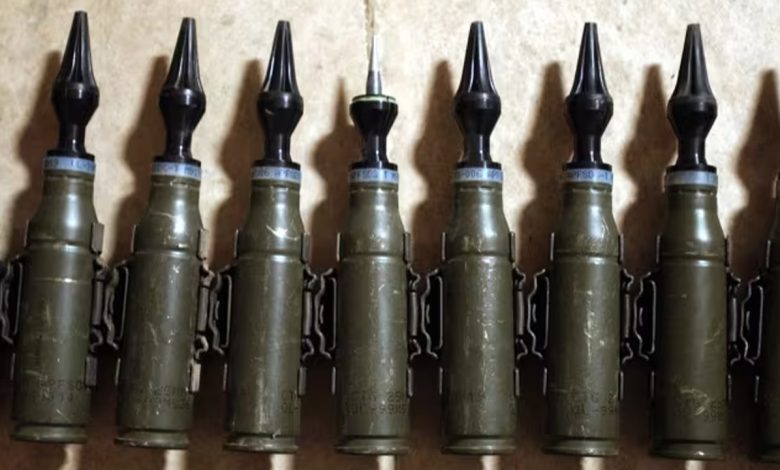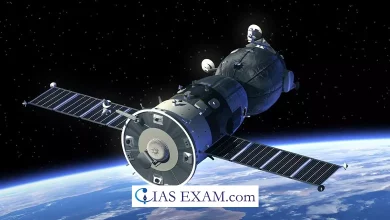
Context- Along with Challenger 2 tanks, the British government announced in March 2023 that it would supply armour-piercing rounds containing depleted uranium to Ukraine.
Uranium
- The chemical element uranium has the atomic number 92 and the symbol U.
- It belongs to the actinide series of the periodic table and is a grayish-silver metal.
- A uranium molecule has 92 protons and 92 electrons, of which 6 are valence electrons.
- An alpha particle is released when uranium decays radioactively.
- Different isotopes have half-lives that range from 159,200 to 4.5 billion years, making them useful for dating the Earth’s age.
- 146-neutrino uranium-238 and 143-neutrino uranium-235 are the most common isotopes found in natural uranium.
- Together, these two isotopes make up more than 99 percent of the uranium that is found on Earth.
- Because it is the only naturally occurring fissile isotope, uranium-235 is frequently utilized in nuclear weapons and power plants.
Depleted Uranium (DU)
- Depleted uranium (DU) is a harmful weighty metal and the fundamental result of uranium enhancement.
- It is the material that remains after the removal of the majority of uranium’s highly radioactive isotopes for use in nuclear weapons or fuel.
- Depleted uranium is not capable of causing a nuclear reaction and is significantly less radioactive than enriched uranium.
Munitions of Depleted Uranium (DU)
- Uses: Due to its high density—about twice that of lead—DU has been used in armor-piercing munitions and is a formidable weapon against heavily armored tanks. Additionally, it can be utilized to strengthen military vehicles like tanks.
- Working: Uranium oxide dust is released when DU-containing weapons hit an object.
- History: In the 1970s, the US and the UK developed depleted uranium missiles. They were first used to destroy T-72 tanks in Iraq during the 1991 Gulf War, then in Kosovo in 1999, and then in the 2003 Iraq War.
- States with possession: DU weapons are manufactured by Pakistan, the United States, Britain, Russia, China, and other nations.
Environmental and health concerns
- DU has the same chemical toxicity as uranium but a lower radiological toxicity, even though it is not considered a nuclear weapon.
- In the circumstances where sections of, or complete, DU ammo were found, there is a possible gamble of radiation impacts for people who come into direct contact with such parts or ammo.
- Serious illnesses (such as decreased renal function and the development of a variety of cancers) can result from inhaling or eating large amounts of DU.
- Missiles containing depleted uranium have the potential to contaminate soil and groundwater.
- In a post-struggle climate, the presence of DU buildups can additionally expand the tension of nearby populaces.
View from Experts
- In 2007, the UN General Assembly mandated a review of the health effects of depleted uranium weapons, and subsequent reviews have been conducted by international organizations.
- Depleted uranium exposure did not result in any significant poisoning, according to the UNSCEAR (United Nations Scientific Committee on the Effects of Atomic Radiation).
- However, individuals who handle fragments of depleted uranium rounds may be exposed to radiation, according to the International Atomic Energy Agency (IAEA). However, the collection, storage, and disposal of such fragments are simple countermeasures that national authorities can use to reduce this risk.
- According to a 2019 study that was published in the journal Environmental Pollution, birth defects may be linked to the use of depleted uranium weapons in Nasiriyah, Iraq.
Are DU weapons legal?
- The UK Ministry of Defence (MoD) insists that no international agreement prohibits the depleted uranium shells it is sending to Ukraine.
- The UK’s depleted uranium shells are “capable of being used lawfully in international armed conflict,” as stated in Article 36 of the First Protocol of 1977 to the Geneva Conventions of 1949.
- Russia announced its intention to deploy tactical nuclear weapons on the Belarusian territory in response to the British announcement.





.png)



